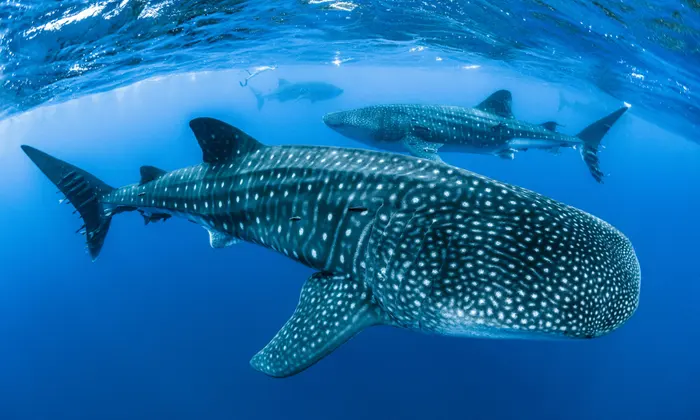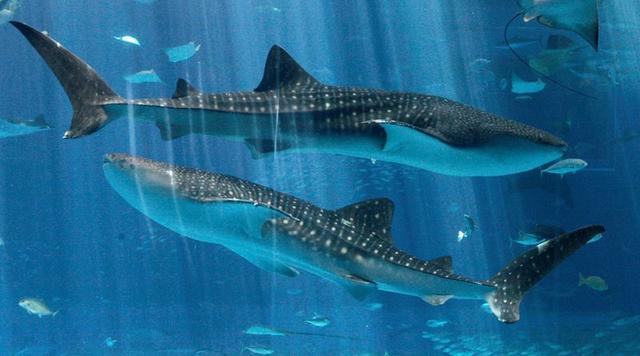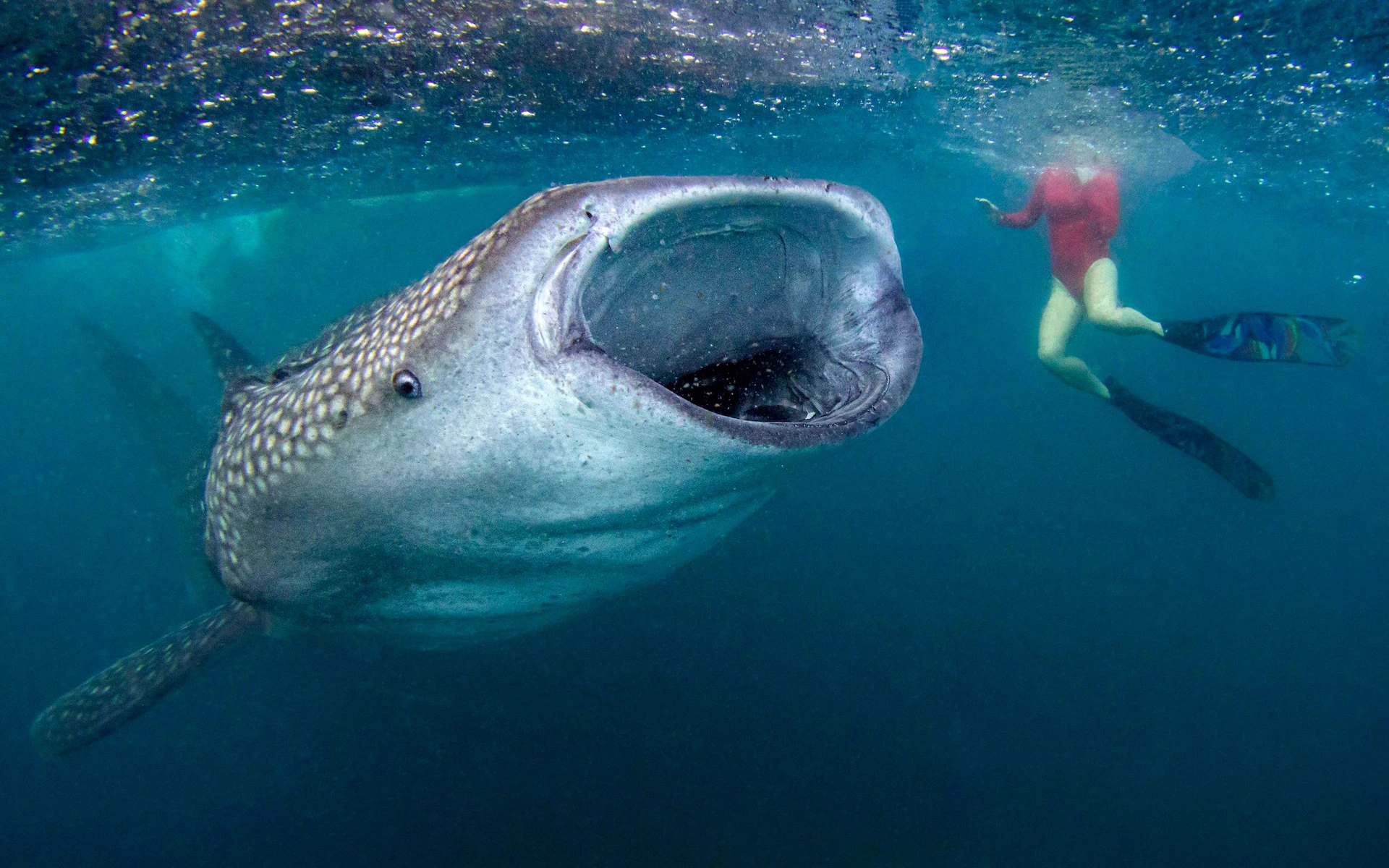By Fanis Michalakis,
The whale shark (Rhincodon typus) is the largest living fish. Although it is a known species, appearing in documentaries, and viral videos, not much is known about its biology, because it is rare to find and hard to study. It is a shark that can reach 19 meters in length and the sole living member of the Rhincodontidae family, in the Rhincodon genus. Every year, on 30th August, we celebrate National Whale Shark Day to raise awareness about the importance they play to the ecosystem, and the actions needed to help its conservation.
The whale sharks have a distinctive appearance which, combined with their massive size, makes them easy to spot when swimming. They have a huge mouth facing forward to help them feed as they swim. Their color is unique, although its purpose is still unknown. There are many possible theories, from traits kept throughout their evolution to protection from radiation. The pattern on their back is also unique like our fingertips, meaning that we can distinguish individuals by taking photos when we want to study them.

The whale shark can be found in warm, tropical waters all around the world where the temperature is between 18-30°C. They tend to spend a lot of time close to the surface to feed but can be seen in greater depths (2000-3000m) in areas with upwelling and high primary productivity. Their diet is still up for debate. Since they swallow large amounts of water, it’s possible to get all sorts of organisms, from tiny krill and other crustaceans to molluscs, algae, and seaweed. Stomach contents suggest that it can even eat small tuna, anchovies, and other small fish! Whether they digest everything, or some enter their mouths “unintentionally” is still a mystery. To capture its prey, the whale sharks use many different techniques. The easiest is by passively filter feeding; by keeping an open mouth as it moves forward. They can also suck water in by opening their mouths for a more active approach, which also allows them to capture faster moving prey that they would otherwise miss at the cost of filtering smaller volumes of water. Individuals have been observed coughing which is suggested to be a method of cleaning the gills of any material that was stuck during the feeding process.
Since it is so hard to study whale sharks, we have little information about them. We have found juveniles in stomachs of other fishes, and individuals swimming in the sea are seen after they reach a certain size. In other words, we don’t know anything about their growth rate, reproduction and sexual maturity, and aging and development. This is an interesting exception to the general rule in research, as typically we know more about eye-catching and big animals and tend to forget about smaller ones.
Another reason why it is so hard to learn about whale sharks is their life history. Although we are missing many details, we know that they are large animals that make a few offspring that they nurture. These juveniles need a lot of time and energy to develop further. This increases the chances of those offspring surviving, but it means that we can’t make field observations, leading to many gaps in knowledge. Even if it were possible to keep track of individuals and see their development, this experiment could take some years. Comparing this to studies on ants that can take less than a year shows the complexity of the situation.

Because the whale shark is docile and inoffensive, many industries have turned to using it for profit. Thus, many projects of ecotourism are run on many beaches, where people can swim close to the animals. However, scientists are still unsure whether this activity is harmless to the fish. Every individual reacts differently. Some ignore the divers, while others swim toward them, showing curiosity to humans. Some, however, change course and swim away, or employ defensive mechanisms, such as showing their backs where the skin is thicker, meaning that they feel threatened. Even in physical contact, they react differently. Some don’t seem to mind, but others express visible signs of stress. Considering that this activity is relatively new, it’s going to take a while until we are certain whether it is affecting whale sharks. If it is affecting them, it can lead to dire consequences, such as changes in distribution. And if this happens to many places, their available habitats will disappear. Since 2016, it has been classified as ani by IUCN due to the recreational activities (snorkelling and scuba diving), shipping lanes, fishing, and oil and gas drilling.
References
- Wikimedia Foundation. Whale shark. Wikipedia. Available here
- Journal of Fish Biology – Wiley Online Library. Available here
- Aidan Martin a b et al. (2006) A review of behavioural ecology of Whale Sharks (rhincodon typus), Fisheries Research. Available here




